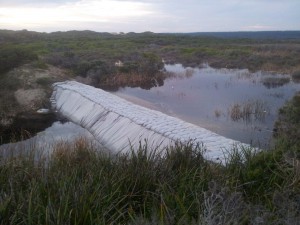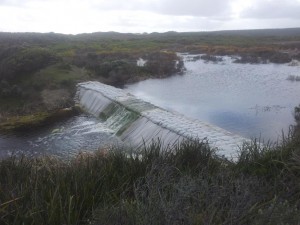Long Swamp restoration trial – August 2015 update
Well, in a year that unfortunately (due to a lack of rain) is panning out very poorly for wetlands across the bulk of our region in Victoria and SA, at least our groundwater fed coastal wetlands are a shining light! Down at Long Swamp, levels have increased slightly since the last update, and positive signs of the habitat transformation we hoped for are well underway.
Let’s start with the main structure, which is now spilling over and holding up really well. The images below show the change over the past couple of months.
To show you what changes are underway inland of the structure, let’s start by looking at the area of wetland immediately upstream, where levels have changed most dramatically due to the depth of the incised artificial channel (formed through its erosion towards sea level over several decades).
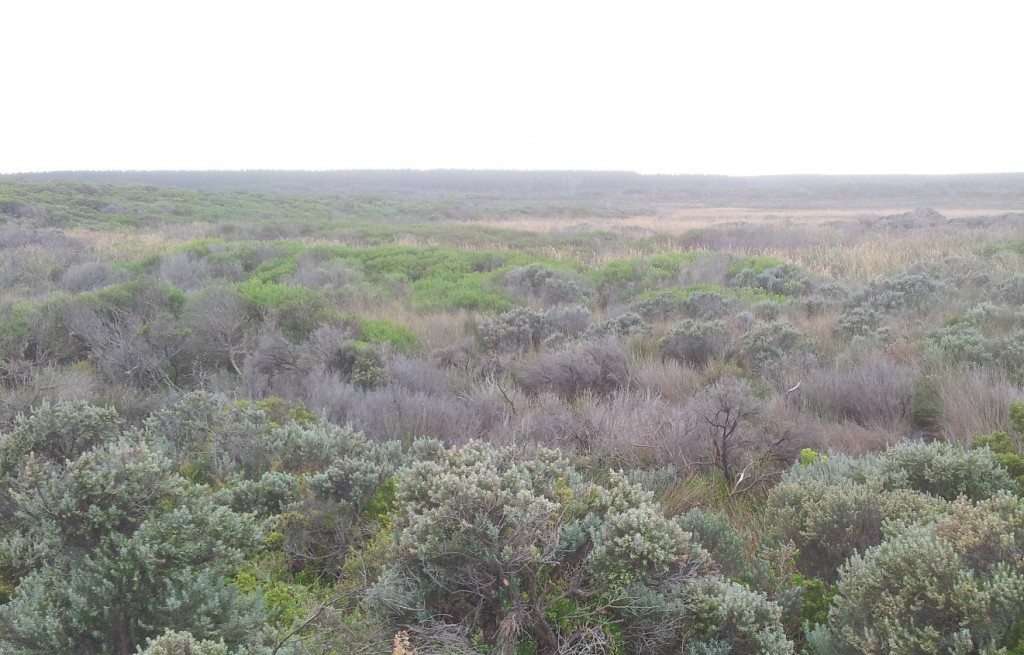
The view from the dune next to the Phase 3 structure, looking inland towards Long Swamp – back in April, when we first started building the new structure.
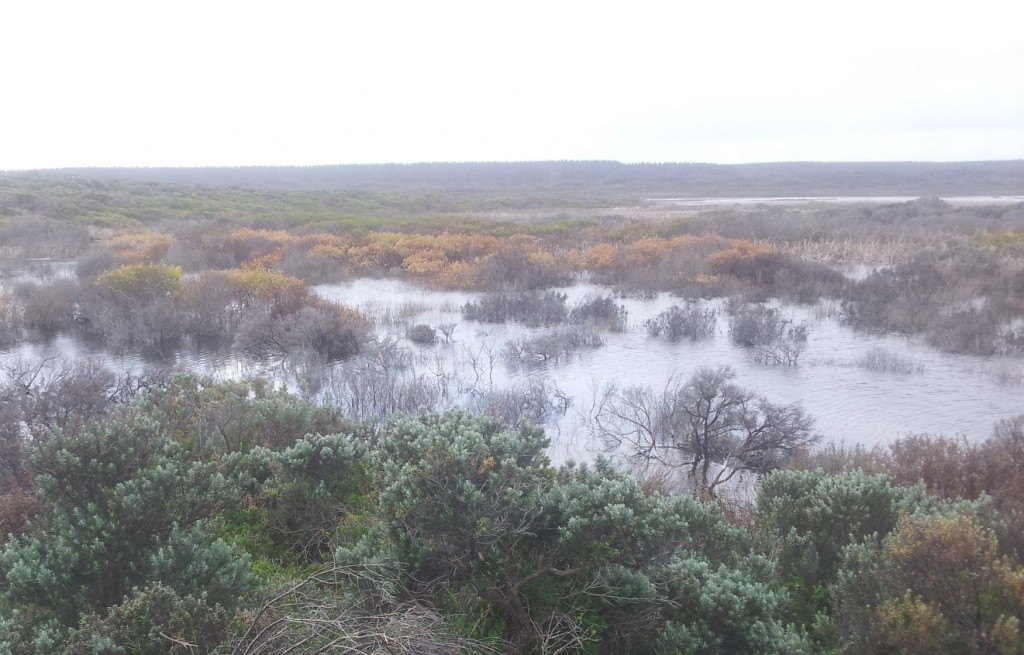
The same view, 4 months later in August 2015. This is the zone where the most dramatic transformation is underway, with terrestrial species being displaced, as wetland plants slowly bounce back – and believe it or not, when you go for a closer look they are still out there! Note the yellowing coastal wattle plants, a dry land species that had invaded this part of the wetland as it dried out.
The next spot we’ll check in at, is just upstream of the (now inundated) Phase 2 structure, at the deepest corner of the former fresh water body that used to exist inland of Nobles Rocks, and is now reforming. Reversing a decades-long trend of decline of open aquatic habitats in Long Swamp, we are hoping that nationally threatened fish species, like the Dwarf Galaxias and Yarra Pygmy Perch will discover and call this area home, along with the nationally vulnerable Growling Grass Frog. Because these species still occur in limited areas elsewhere in Long Swamp, recolonisation of this habitat for some species may take a while – but our monitoring program will help us detect these and any other future positive changes. We expect Dwarf Galaxias to be the first threatened species to bounce back in this area, as this species is adept at exploiting newly inundated habitats (and in fact have already been observed there!).
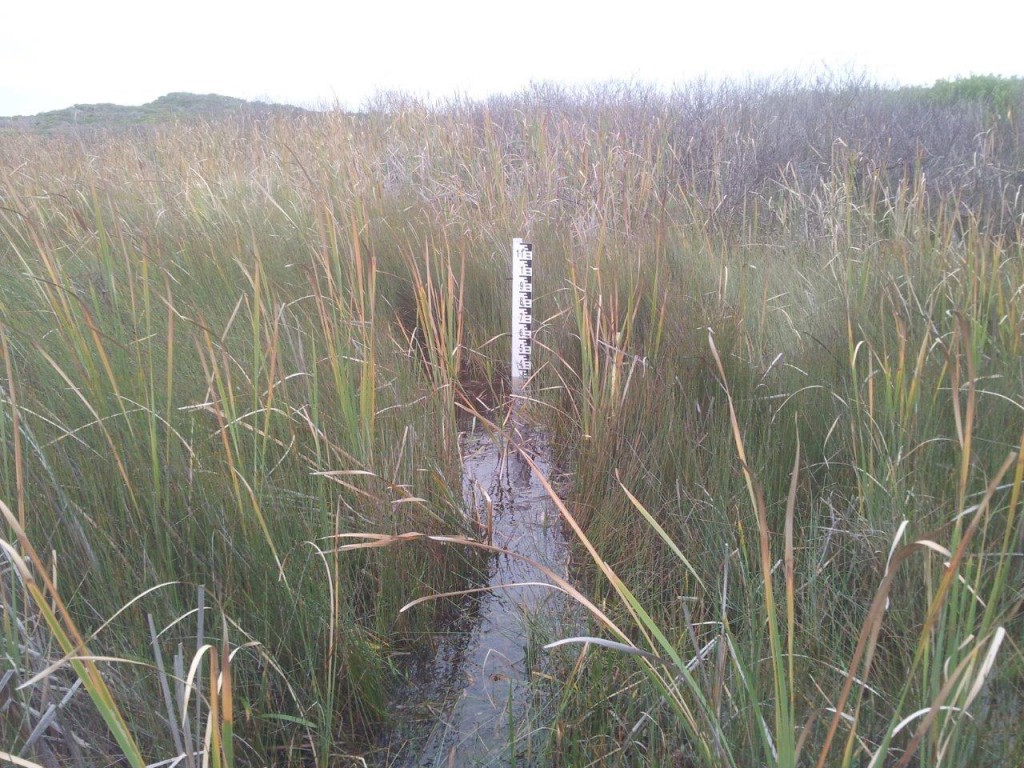
The swamp after the early April downpour, but before the Phase 3 structure was complete.
Depth – 34 cm
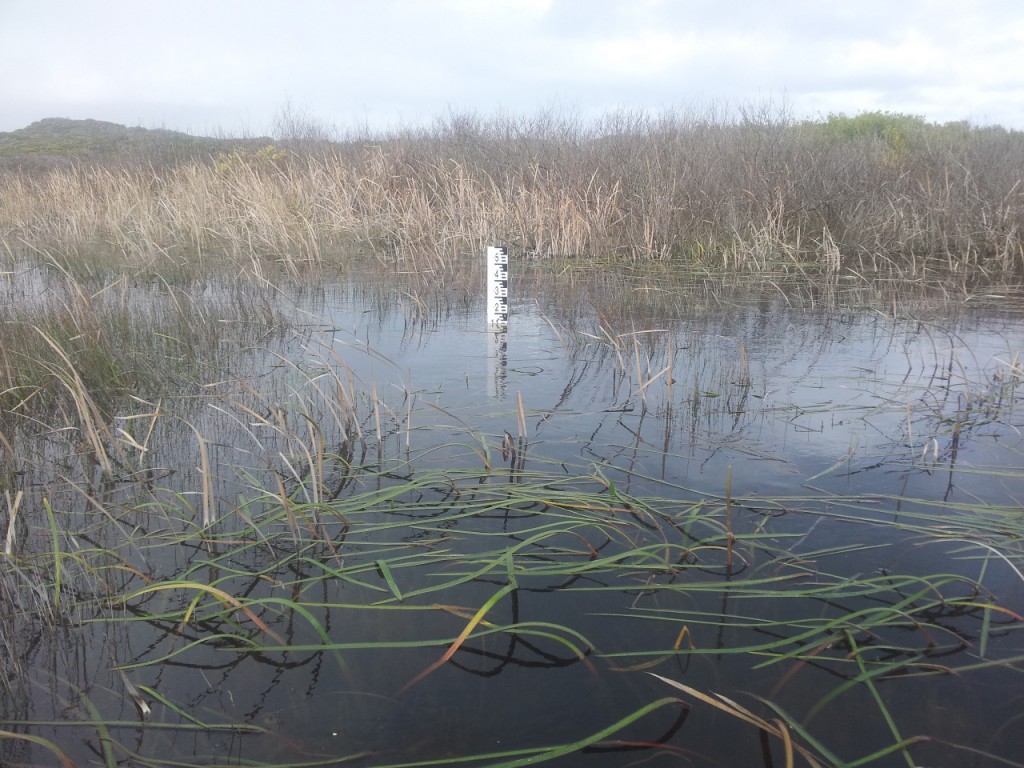
The same view, 4 months later in August 2015, with Water Ribbons (foreground) happily taking immediate advantage of the return of deeper water for the first time in decades.
Depth – 113 cm (Note that the gauge board has been added to in height)
A little further inland, away from the deeper corner near the outlet, and more subtle shifts in wetland character are now underway. In this image, small invading coastal wattle plants that were establishing in this area of rushes, are now turning up their toes…
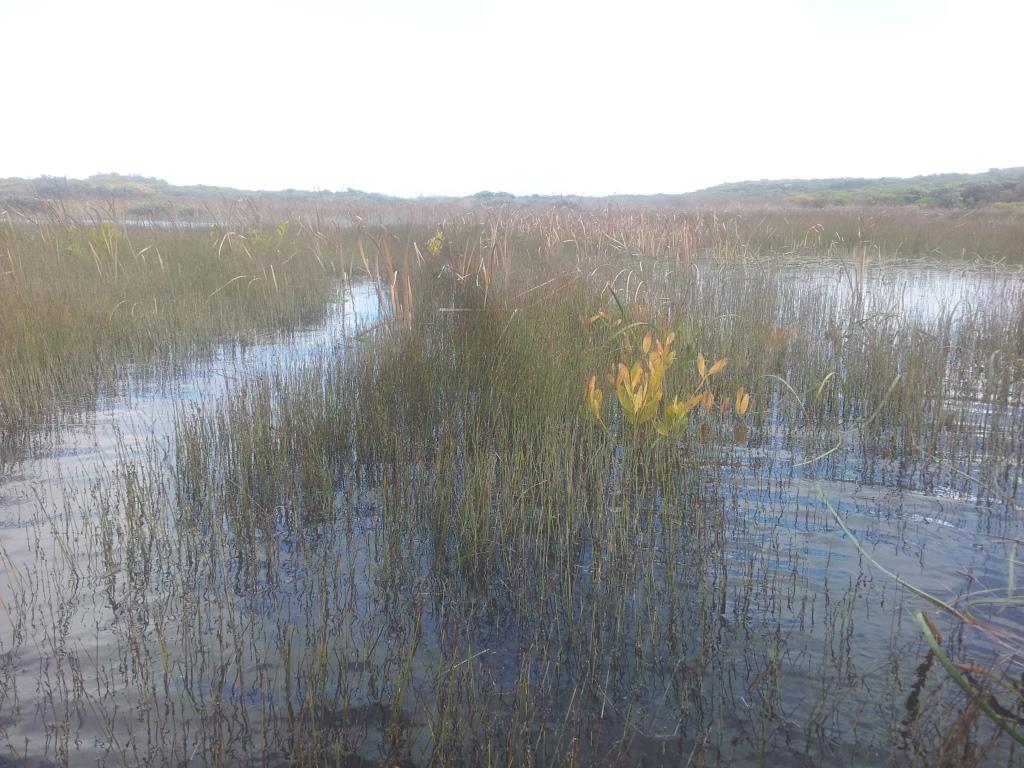
This image from August 2015 shows the subtle reversal of fortunes for wetland habitats happening over a significant area in Long Swamp inland of Nobles Rocks. This yellowing plants are young coastal wattles, a dry land dune species that has been aggressively invading the wetland, but are now being nudged ‘upslope’ with the return of more sustainable hydrology.
A little further inland again, and we reach our gauge board near the edge of the zone of influence of the structure at Nobles Rocks. Water is now very close to the level required to encourage a surface flow towards Eel Creek downstream, and ultimately the Glenelg River.
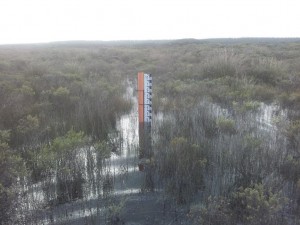
Our gauge board in the zone where we hope to encourage flows to move downstream, back towards the Glenelg River estuary – 12th August 2015. Depth – 40.5 cm.
This is a zone where we are also hoping the more subtle change in water depth will result in the slowing or reversal of a trend of ‘terrestrialisation’ that is compromising important wetland habitats as they shrub up with plants adapted for drier conditions. This is an area where significant Baumea arthophylla sedgelands, a key habitat for a significant species in Long Swamp that also happens to be our logo, the Ancient Greenling Damselfly, are being invaded.

In this example, sedgeland is first being invaded by a wetland shrub Woolly Tea-tree (blue foliage, back) and more recently by a dryland dune species, Coastal Beard Heath (light green foliage, front).

Another example nearby of the shrubbing up of wetland habitat in Long Swamp. This image shows the recent establishment of Woolly Tea-tree (Leptospermum lanigerum), a wetland fringe species, moving downslope into this sedge dominated habitat.
The positive immediate changes we are now observing in the deeper sections of swamp near Nobles Rocks are a fantastic result and just reward for the hard work of so many volunteers, who have helped us over the last 2 years to get the trial underway. It will be a slower process, but as the trial continues, let’s hope that we begin to see a subtle influence in some of the shallower sedgeland areas of Long Swamp described above.
Stay tuned, with more updates to come as the season progresses…


